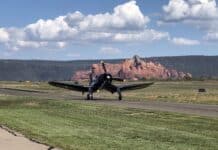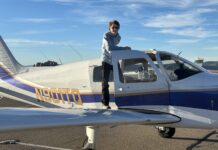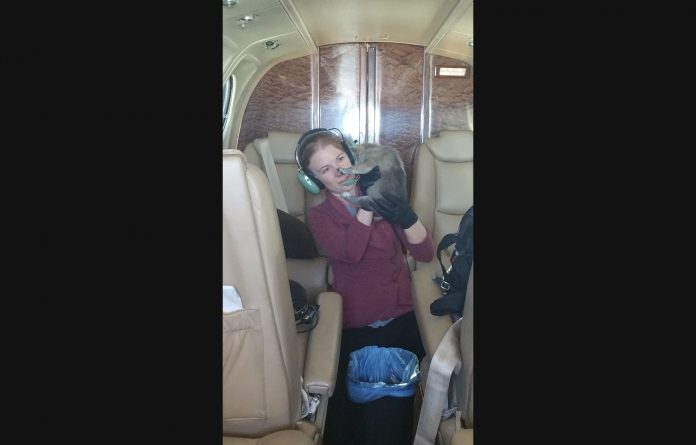
In April, Sedona resident Mike Schroeder departed Sedona Airport in his 10-seat King Air Turbo Prop, landed in St. Louis, picked up a black duffel bag, then flew to a remote airport in eastern Arizona. After landing, state and federal agents carefully checked and prepared the contents of the bag before handing it off to a special team to deliver to a remote, undisclosed location.
The cargo: Three chubby, yawning Mexican gray wolf pups.
Eleven days later, Schroeder picked up four more pups from Wichita, Kan.
The flights were part of a springtime mission by federal and state wildlife agencies to put captive-born Mexican wolf pups into wild wolf dens, to be raised by wild mothers.
Schroeder volunteered his time and his airplane to fly the captive-born pups from breeding facilities in the Midwest to their fur-ever homes in Arizona as a member of LightHawk Conservation Flying, an organization that connects volunteer pilots with conservation projects in need of air support.
Philanthropic flying is one of Schroeder’s current passions. He also flies volunteer missions with Veterans Airlift Command, which arranges private flights for post-9/11 wounded veterans for medical appointments and other travel needs.
This year’s round of cross-fostering, as the pup placements are called, put 20 captive wolf pups into wild dens, the largest number of placements since cross-fostering began in 2014.
Paul Greer, Mexican Wolf Interagency Field Team leader for Arizona Game and Fish, said the purpose of the cross fostering is to expand the gene pool in the wild population.
Mexican wolves, a subspecies of the Northern gray wolf, came within a hair’s breadth of extinction in the 1970s. After U.S. officials listed the Mexican wolf as an endangered species, the U.S. Fish and Wildlife Service initiated a breeding program with the last seven Mexican wolves remaining.
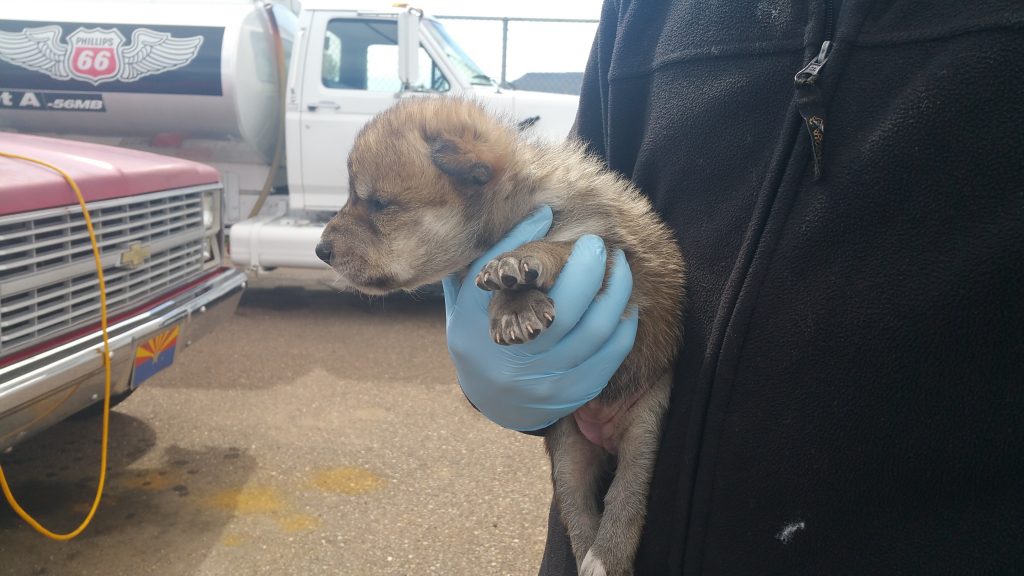
With such a small seed population, genetic diversity is a problem.
Currently, there are about 180 wild Mexican wolves living in the mountains near the border of Arizona and New Mexico. Emily Renn, executive director of the Grand Canyon Wolf Recovery Project in Flagstaff, said that any two wild Mexican wolves are “as closely related as full siblings.”
The lack of genetic diversity affects the health of the wolves, reducing litter sizes and survival rates.
“I think the general public doesn’t understand how genetically imperiled they are,” Renn said.
‘Planning D-Day’
Foster pups need to be less than 14 days old, so the Mexican Wolf Interagency Field Team has to match captive mothers with wild mothers giving birth around the same time, and then transport the captive pups from the middle of the country to dens in the backwoods of Arizona and New Mexico — all in a window of a few days.
That’s where Schroeder and his King Air came in, helping to thread the logistical needle for the breeding centers and the state and federal wildlife agencies involved. Schroeder joked that organizing the pup placement was “like planning D-Day.”
Before flying wolves, Schoeder had participated in other conservation flights, including bringing endangered bobwhite quail from breeding centers to southern Arizona.
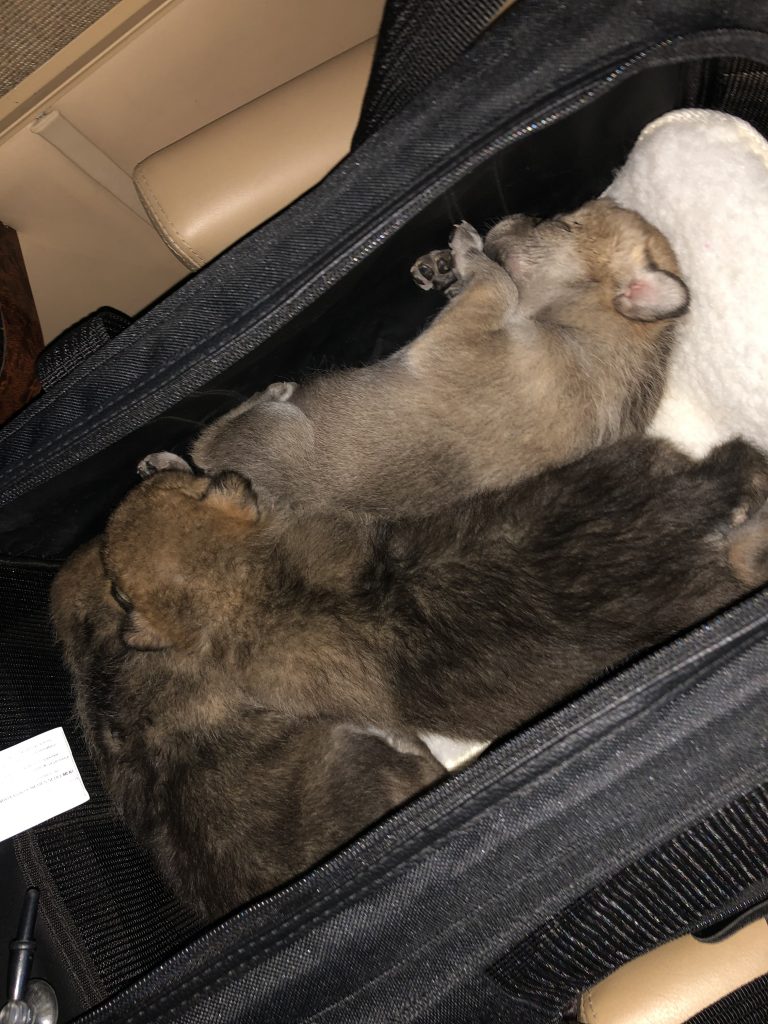
For Schroeder, one of the perks of the mission was the chance to see the pups up close. During the flight from Wichita, Kan. to Springerville, the pups laid in the co-pilot’s seat next to him.
“They’re little furballs. It’s amazing in two weeks how much fur they do have and how much personality they already have,” Schroeder said. “They’ll roll around a little bit and gnaw on each other, but they’re pretty much knocked out .… It was a lot of fun.”
Using trail cameras and capturing young wolves this fall, Greer said the agency has confirmed that at least seven of the pups fostered in the spring have survived. Now much taller, the gangly pups have “left the den sites and are spending more time hunting and traveling with the packs.”
Renn called this year’s cross-fostering mission “an amazing effort,” but she doesn’t think that cross-fostering alone is adequate to diversify the wild population. Only 50% of wild wolf pups survive their first year, and even fewer make it to maturity at 2 years old and have offspring of their own.
The Grand Canyon Wolf Recovery Project wants Arizona Game and Fish to resume releases of bonded adult Mexican wolves, which Renn said contribute their genes faster and more reliably — in addition to cross-fostering.
But Greer said cross-fostering has advantages over adult releases, noting that wolves raised in the wild are less likely to have interactions with humans than wolves released as adults.
Cross-fostering is also less politically fraught than adult releases, as there are opponents of Mexican wolf expansion in Arizona, including former U.S. Sen. Jeff Flake.
Arizona’s wild Mexican wolf packs are concentrated around the Arizona/New Mexico border, but individual wolves dispersing to find mates have roamed as far as Flagstaff and Williams. Reen said there have been six confirmed sightings in north-central Arizona over the last two years, and more unconfirmed.
“Sightings are possible in our area,” Renn said.
Schroeder told the wolf recovery team that he’d be happy to assist with next year’s cross-fostering, calling it a “good program.”
“There’s 180 of these in the wild and there’s 8 billion of us or so on the planet, so I figure we can probably help them out a little bit,” Schroeder said.
















